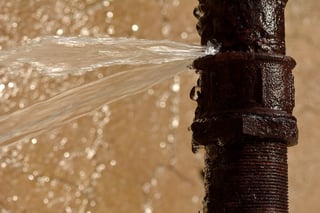HOW TO CHOOSE A RIGHT PRESSURE TRANSDUCER/TRANSMITTER?
(2021年11月26日)https://www.directindustry.com/industrial-manufacturer/capacitive-pressure-sensor-91627.html
As a professional differential pressure transmitter manufacturer, Alpha instruments Inc was founded in 2005, in Massachusetts, US. We specialized in the development and manufacture of low differential pressure transducer, which were applied in HVAC, Critical Environments, Medical Industry, Semiconductor Equipment, etc.
There are multiple types of pressure transducers for a variety of applications. Each pressure transducer has different aspects that will impact how it works and the applications the pressure transducer works best for. When selecting a pressure transducer, keep these five criteria in mind:
1.Pressure range:
First of all, it is important to choose a sensor with a measuring range that corresponds with the pressure range you need to measure, taking into account normal conditions and possible occasional pressure variations.Alpha provide Unidirectional minimum range is 0-25Pa(0-0.1 in.WC) and maximum range is 0-25000Pa(0-100 in.WC) ;Bidirectional minimum range is -10Pa to 10Pa(-0.05 to 0.05 in. WC) and maximum range is -10000Pa to10000Pa(-50 to 50 in. WC)
2.Stability
Long-term stability is one of the most important parameters that determine the overall measurement accuracy of a pressure sensor. Long-term stability in pressure sensors is defined by the maximum acceptable change in zero and span values during the course of the calibration interval of the sensor. In short, for a sensor to be considered stable, it should maintain a very low drift in its measurements over the calibration interval. Alpha stability is ±0.5% FS/YR which higher than most of the others.
3.Over pressure
Overpressure refers to the maximum pressure value a transducer can withstand without affecting performance; it can also refer to a situation where the pressure value exceeds the limits. Although it is not ideal, pressure transducers can withstand occasional pressures up to their overpressure rating, eventually returning to their natural state. However, pressures that reach burst pressure, the maximum pressure that may be applied to the positive pressure port without physically damaging the internal sensing component, can rupture the diaphragm and cause leakage. Pressures above overpressure but below burst pressure can result in permanent diaphragm deformation, causing an output shift affecting operational performance or accuracy readings.
4.Accuracy
Pressure gauges come in many different accuracies. Accuracy of common pressure transducers could range from 0.5% to 0.05 % of the full-scale output. While Alpha focus on high accuracy from 0.6%-0.25% for very low pressures for critically demanding applications.
5.Compensation range
The compensated temperature range defines the limits of operation for specified measurement accuracy. e.g. A pressure sensor has an accuracy of 0.25% full scale over a compensated temperature range of -20 to +80 degC.
Since temperature errors are often significant for many measurement devices, a manufacturer will incorporate digital or analogue temperature compensation. If the measurement device is used outside the compensated temperature range, the accuracy statement is no longer valid, because the device has not been tested or compensated for that temperature.
6.Why choose a capacitive pressure sensor
In a capacitive pressure sensor, the membrane is one of the capacitor plates. Under pressure, the membrane deforms, varying the capacitance of the capacitor. These sensors provide a good level of accuracy and sensitivity, they can measure low pressures, in the mbar range.
- «前のできごと |
- 次のできごと»
- このできごとのURL:



コメント